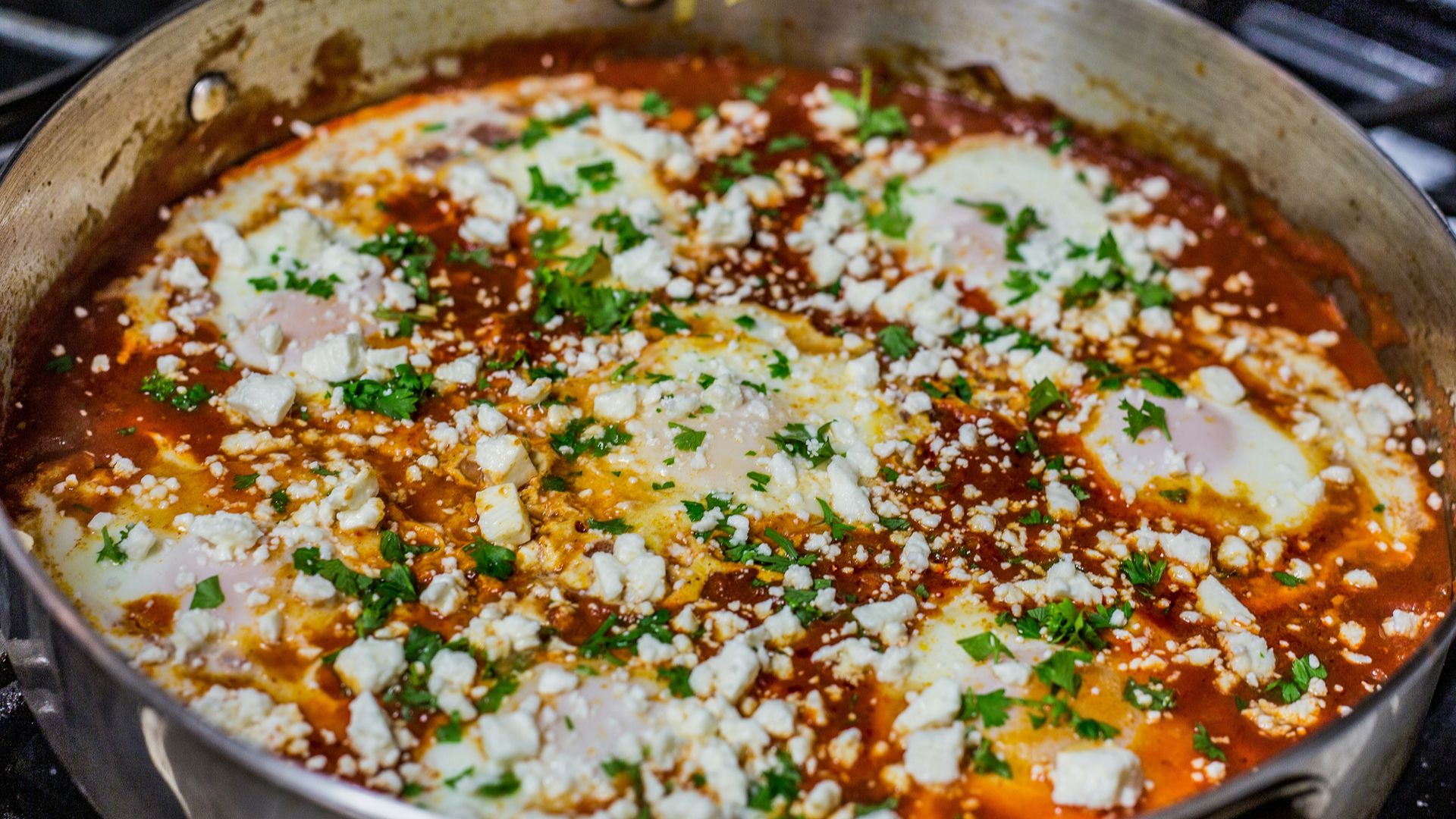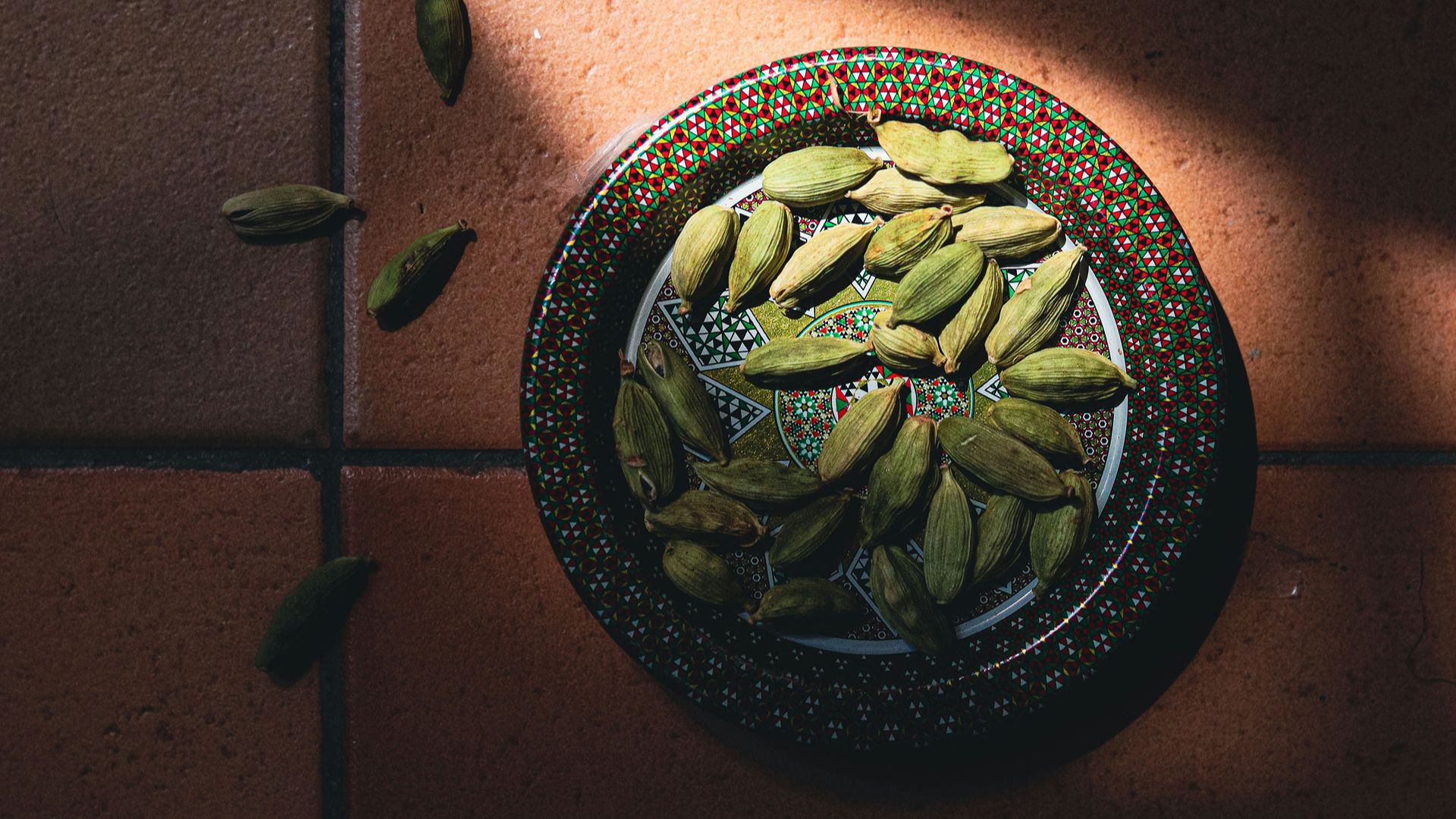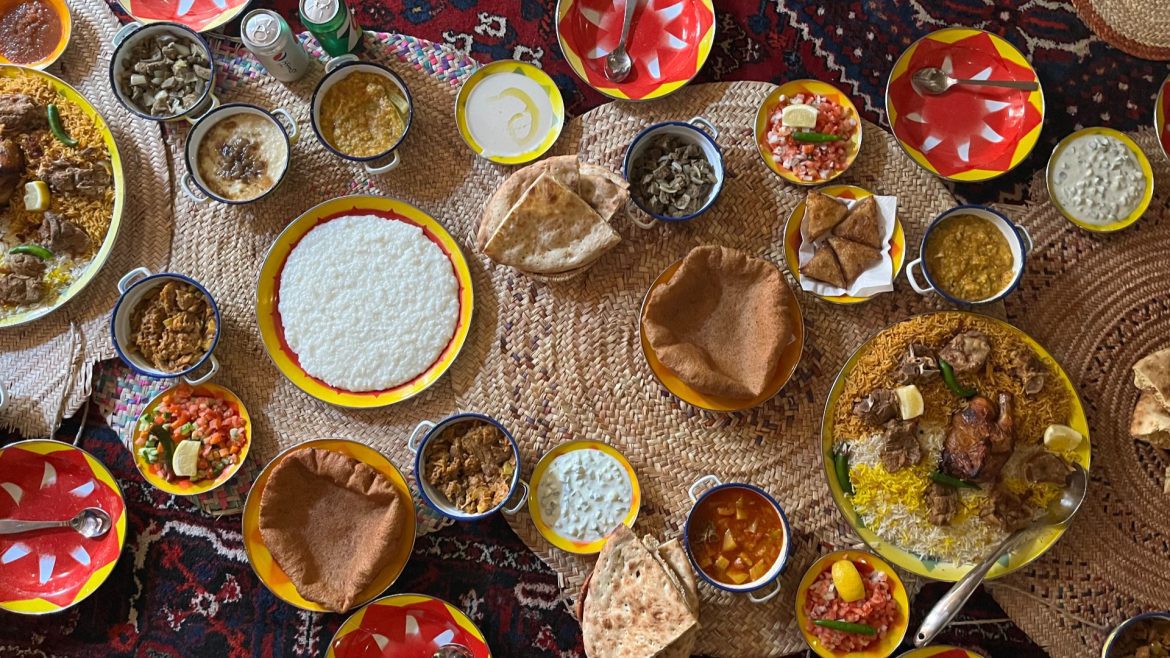From tender meats cooked in underground ovens to queue-summoning street foods, Jude Blay Yawson takes a look at the Kingdom’s most celebrated plates.
Like much of Saudi Arabia’s culture, the country’s food scene is cloaked in mystery – at least, to the uninitiated. But with a rich history spanning millennia, born of Bedouin people and spice-selling trade routes, this Middle Eastern gastronomic tradition is one not to be overlooked.
Regional variety is rich in Saudi Arabia, from the rice-and-meat-based kabsa dish of the Central Region to the stone-grilled chicken madhbi of the Aseer in the south and the Yemeni-influenced haneeth (slow-roasted lamb), that’s traditionally cooked until it’s tender and falling off the bone in an underground clay oven, or tannour. If that doesn’t get you revisiting your preconceptions about this ever-innovating Kingdom, perhaps a side serving of street-food-style mutabbaq pancakes will…
Read more: One female entrepreneur’s take on Saudi tourism

Shakshuka
While Arabic-style shakshuka isn’t specific to Saudi Arabia, it is one of the country’s most popular brunch dishes and a Middle Eastern favourite, found at every breakfast place from the capital Riyadh to the coastal city of Rabigh. Layering up from a tomato-paste base, it mixes peppers, finely chopped onions, grated garlic cloves and sometimes ginger with softly poached eggs and green chillies to accent the dish.
Brought to Saudi Arabia via historical trade routes between North Africa and the Middle East, its name comes from the Amazigh word ‘shakshek’ (meaning ‘all mixed up’) and became popularised due to its low-cost, easy-to-make nature. Today, it’s often served with roti or naan and best sampled over breakfast in Saudi with freshly squeezed juice or an acclimatising tea.



Mutabbaq
One of the most popular street foods in Saudi Arabia is mutabbaq, a savoury or sweet stuffed pancake. Mutabbaq comes from the Arabic word for ‘folded’ as fillings such as egg, minced meat and vegetables, or banana, lemon and sweetened cheese, are folded into a thin crepe-like casing before being pan-fried until crispy on the outside, soft on the inside.
You can try this snack at open-air markets and street corners across the country. But it’s really the star of the show in Jeddah, especially amid the souks and snaking lanes of the historic Al-Balad district, where it’s often prepared fresh on streets that come alive at night.
Read more: Inside Intrepid’s new Women’s Expedition in Saudi



Jareesh
Jareesh is another traditional Saudi and Middle Eastern staple. To make the one-pot dish, a cup of washed jareesh – the name given to the crushed or coarsely ground wheat that forms the base – is added to simmering chopped onions and garlic, before ladling in chicken or lamb broth and slow stirring, until the dish reaches its creamy porridge-like consistency.
Topped off with shredded meat and spices, and sometimes garnished with oil and herbs, jareesh can be enjoyed on its own or accompanied with yoghurt, a simple salad and bread. As one of the country’s most prided dishes, it’s eaten at all times, in all places, but especially favoured during religious holidays like Ramadan and Eid and big-group occasions such as weddings.

Saleeg
The white-rice dish of saleeg originates in Saudi’s western Hejaz – a region that’s home to Jeddah and the twin religious sites of Mecca and Medinah. Cooked with broth, milk and butter, it’s often compared to the Italian risotto for its creamy texture, albeit seasoned with spices such cardamom and black pepper.
This being the Middle East, meat (typically chicken, usually boiled, then roasted) tops off the dish – before being served on a special tabasi metal platter, fit for sharing at special occasions, such as Shabana – which marks the lunar month before Ramadan in the region.


Mandi
Another favourite dish, especially in the Kingdom’s southern provinces of Aseer and Al-Bahah, is mandi – known for its smoky flavour profile. Traditionally cooked underground in a circular fire-warmed tannour pit, it involves roasting a whole lamb or goat, or a whole chicken alternatively, in a tightly sealed pot for up to two hours to retain tenderness in the meat. Indeed, the name ‘mandi’ originates from the Arabic word ‘nada’ meaning ‘dew’, which nods to its moistness.
Rice typically gets cooked underneath, enabling the classic seasonings of salt and saffron to flavour the meat and drip down to the base, along with those all-important fats. As much as you might like to eat it all to yourself, it’s typically shared and served on a platter as a mark of togetherness, best eaten with friends.
Read more: How Saudi Arabia defied my expectations

Kabsa
As the national dish of Saudi Arabia, kabsa holds a special place in the hearts of local foodies. Similar to mandi (but made on a stove with a pot, rather than underground), fragrant and flavourful kabsa blends broth-cooked aromatic basmati rice with crispy chicken, a spice mix and garnishes of raisins and toasted nuts.
Originally emanating from the nomadic tribes of the Arabian Peninsula, it has now become a staple in restaurants across the country and many Saudi Arabian households – its recipe handed down and safely guarded from generation to generation. When guests arrive, kabsa acts as a symbol of Saudi hospitality and generosity – so don’t even think about just having one plate.
Sample the flavours of Saudi Arabia on Intrepid’s Women’s Expedition, where you’ll visit a citrus farm, learn recipes with a local cook and experience a traditional Saudi dinner. Or plan your own tailor-made journey.




